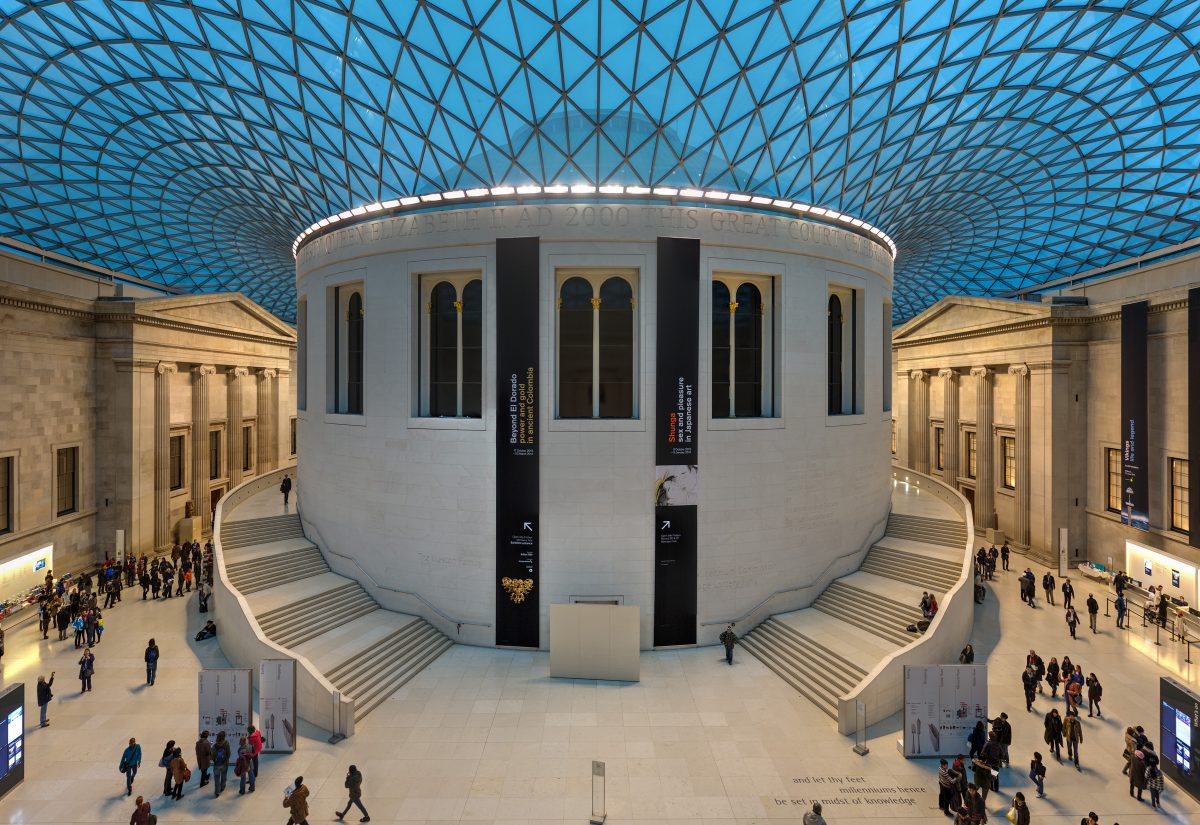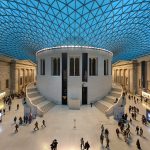
Last week, I went to the Silk Roads exhibition at the British Museum. It situated slavery in wide-ranging Eurasian commercial networks, through which (for example) Vikings sold slaves to Arab polities (drawing on the research of the Dirhams for Slaves project). It therefore provides a different perspective on early medieval slavery to the DoSSE project, as we tend to put it in the context of the continuity and transformation of Roman domestic slaveholding practices in the successor states of the Empire.
Slavery, however, is only one small part of the exhibition, which reveals how trade in goods and ideas connected areas ranging from north-western Europe to Japan, via land and sea (by referring to the Silk Roads plural, the exhibition seeks to avoid an overemphasis on the trade of silk across deserts in central Asia). The exhibition is full of colourful objects, fascinating documents, and informative displays; I recommend visiting.
It is not especially helpful to remark that a museum should have said more about the particular topic one is personally interested in. Still, I wish there had been even more about slavery than there was (I found some compensation in the discussions of slavery in the accompanying catalogue).
The exhibition itself does highlight the role of slavery along the Silk Roads in thought-provoking ways—a worthy achievement, given how difficult it can be to find material evidence for slavery in this period. One display effectively contrasts an iron collar possibly used for a slave with a silver necklace for a high-status woman. You can listen to an audio recording of the life of St. Findan, who escaped from Viking captivity. The objects on display prompt us to think about exactly how far along the Silk Roads a slave might have been taken, the linguistic and cultural dislocation such journeys entailed, and what that experience generally was like. We get a slave sale document from Fustat, Egypt and another from the Mogao Caves in Dunhuang, China: a reminder that slavery in this period was not merely a hangover from ancient Rome, but rather involved a thriving contemporary trade that went beyond the borders of the old Roman world. Medieval historians have rightly emphasised the diversity of slaveholding practices, but it is striking that versions of the same exploitative system operated in and across Norse, Sogdian, Islamic, Christian, Jewish and Far Eastern societies.
Slavery is not, therefore, downplayed by the exhibition. Yet to present the public with a coherent history in a limited space, and over brief captions, an exhibition inevitably has to make compromises; to leave things out; to leave other things acknowledged but not explored. The history that the Silk Roads exhibition primarily conveys relates to diversity, connection, and cultural diffusion, enabled by religious tolerance and a desire to understand others.
But I wonder how far this emphasis is undermined by the evidence for slavery. Medieval people were interested in people from beyond the borders of their polities: interested in their beliefs, their culture, their technical expertise. They were also interested in other people as human chattel who could be sold for a profit and sexually exploited. Slaves matter because they were human beings. In the context of the exhibition’s subject, they also matter because they show how brutal enslavements of foreign and enemy populations, and vulnerable people generally, drove, in part, the cultural and commercial exchanges of the Silk Roads. This history is hinted at by the exhibition, but not dwelt upon or explored as much as the evidence for medieval open-mindedness.
The Silk Roads exhibition successfully tells a new story about the early Middle Ages. But slavery returns us to the old story of violence, war and cruelty—across the whole of Eurasia.




